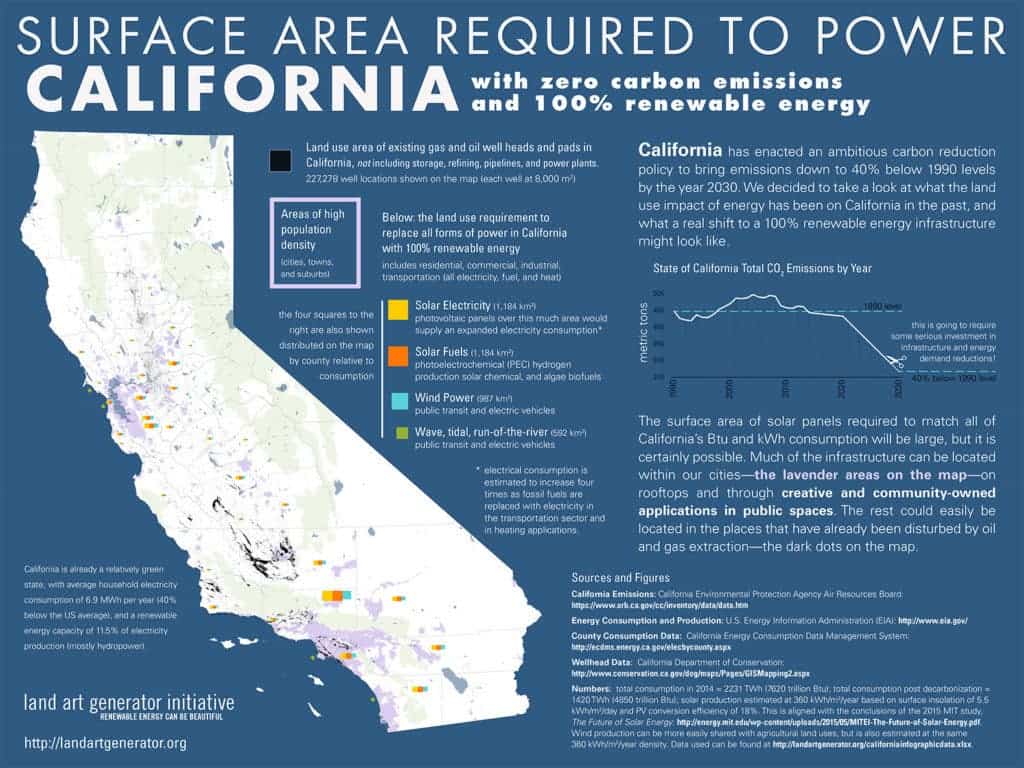
The men and women behind the Land Art Generator Initiative (LAGI), a yearly competition which awards the most innovative but artful sustainable designs, just illustrated how much land we’d need to cover in California to power the sunny state with 100% renewable energy.
We knew that you’d need to a boat load of solar panels and wind turbines to turn California into a carbon-free state, but now we finally have a visual rundown.
“Starting in 2009 with theSurface Area Required to Power the World with Solar, we have been making the case that the renewable energy transition, while a huge undertaking, is not any more ambitious in scale than previous human endeavors, and that the footprint on our environment can be designed to be in harmony with nature and provide a unique benefit to human culture,” the authors of the infographic wrote on their blog.
According to research, the land use required to power California with 100% renewable energy (all electricity, fuel and heat) is:
- 1,184 km^2 solar electricity
- 1,184 km^2 solar fuels
- 987 km^2 wind power
- 592 km^2 Wave, tidal, run-of-the-river
That sounds like a lot to most people but this is 2016. By now, humans have completed immense infrastructure works which can be incredibly complex. In fact, the authors of the infographic cite a previously published MIT study that estimated the land area required to satisfy 100% of U.S. energy demand, not just Cali, in 2050. According to the study, 100% renewable energy from solar requires half the land used for cropland currently devoted to growing corn for ethanol production. This same land area is less than the total area occupied by major roads in the nation or, more revealing, less than the area disturbed by surface mining for coal.
In the end, we might not even need to displace that much land for renewable energy. Another study found American rooftops provide enough surface area for solar panels to provide 60% of the nation’s projected electricity needs in 2050.
“Recognizing the unprecedented global threat of human induced climate change, we do not have the luxury of acting any less vigorously than California on a global scale, and in fact, that may not even be fast enough. Don’t ask how much it will cost because that is the wrong question. What will be the cost to the children born in 2016 if we do not act now? The technology exists to begin today, and the economic stimulus effect of a WPA-scale regenerative infrastructure project for the 21st century will bestow positive benefits for generations.”
“Let’s get to work!”






